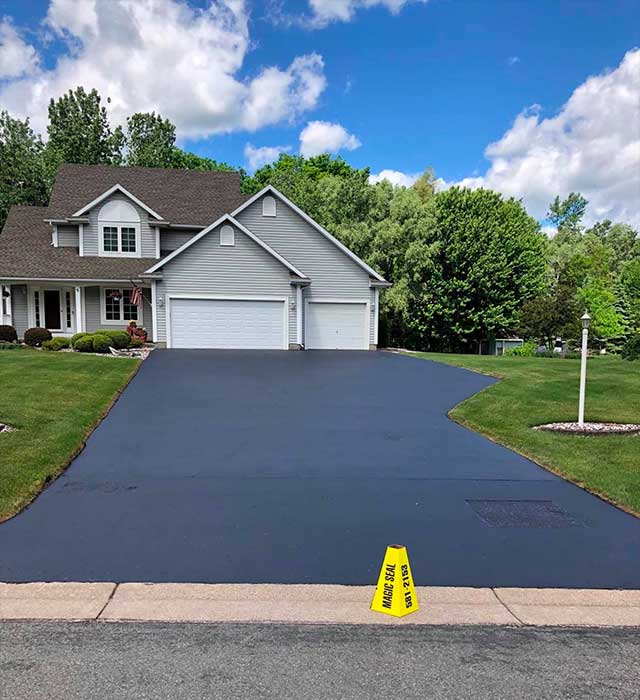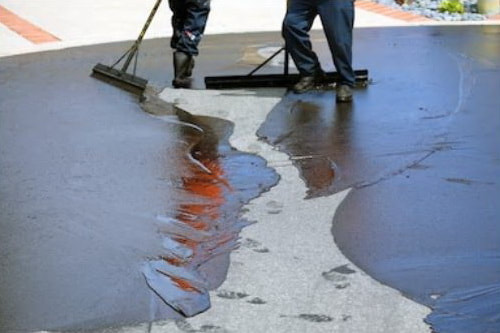Change Your Building's Visual appeals: Commercial Parking Area Paving and Asphalt Sealing Solutions
Change Your Building's Visual appeals: Commercial Parking Area Paving and Asphalt Sealing Solutions
Blog Article
Warm Mix Asphalt: A Lasting Solution for Sidewalk
Hot Mix Asphalt (HMA) has arised as a leading sustainable choice for sidewalk remedies, providing a myriad of innovative modern technologies and ecological advantages. Its ability to reuse products and lower energy consumption presents an engaging case for its adoption in road construction tasks. The long-term performance and durability of HMA make it a recommended option for framework development. As the need for eco-friendly building practices grows, exploring the nuances of HMA's sustainability can offer valuable insights into the future of sidewalk services.
Ecological Benefits of Warm Mix Asphalt

Furthermore, Hot Mix Asphalt helps to mitigate urban warmth island impacts. Its dark shade soaks up sunlight, reducing the quantity of heat reflected back into the atmosphere compared to lighter-colored pavements. This can reduce ambient temperatures in urban areas, reducing the demand for a/c and ultimately reducing power intake.
On top of that, Warm Mix Asphalt adds to boosted stormwater management. Its porous nature permits water to recharge and penetrate the sidewalk groundwater supplies, lowering drainage and the risk of flooding. These ecological benefits make Warm Mix Asphalt a lasting selection for leading roads and freeways.
Power Effectiveness in HMA Manufacturing
Is power performance a critical factor in the production of Warm Mix Asphalt (HMA)? Definitely. Power plays a significant function in the production of HMA, influencing both cost and environmental sustainability. One key aspect of power efficiency in HMA production is the usage of cozy mix asphalt (WMA) modern technologies (angled parking). WMA permits the mixing and placement of asphalt at lower temperature levels contrasted to traditional warm mix asphalt, causing lowered power consumption during manufacturing. This procedure not only decreases gas use but also reduces greenhouse gas emissions, making it an extra eco friendly alternative.
In addition, improvements in plant innovations have actually led to even more energy-efficient HMA production procedures. By enhancing power use in HMA production, the market can reduce its carbon footprint while keeping high-quality sidewalk products.
Recyclability of Warm Mix Asphalt
The recyclability of Warm Mix Asphalt (HMA) is a crucial aspect of its sustainability and long-term environmental effect. HMA is just one of one of the most recycled materials in the USA, with over 100 million lots of redeemed asphalt sidewalk (RAP) being recycled every year in brand-new pavement building. Recycling HMA offers a number of environmental advantages, such as decreasing the demand for virgin products, decreasing energy intake throughout production, and reducing the quantity of waste sent out to landfills.
The procedure of reusing HMA involves crushing the existing sidewalk, crushing it into smaller pieces, and mixing it with brand-new aggregate and asphalt binder to produce a recycled mix. Overall, the recyclability of HMA plays a significant function in promoting lasting methods within the pavement industry.

Long-Term Efficiency of HMA
Asphalt pavements show toughness and resilience over a prolonged duration, mirroring the long-term efficiency of Hot Mix Asphalt (HMA) The long life of HMA can be credited to its capacity to stand up to rush hour tons, severe climate condition, and the results of aging. Research studies have actually shown that properly designed and correctly created HMA sidewalks can last for two decades or more with routine upkeep. The key to making the most of the long-lasting efficiency of HMA hinges on hot mix asphalt using premium materials, adhering to ideal techniques in construction, and carrying out reliable maintenance approaches. Proper water drainage, regular examinations, and timely fixings are necessary for preserving the structural stability of HMA pavements gradually. Furthermore, improvements in HMA innovation, such as using polymer-modified binders and cozy mix asphalt, have actually better More Help enhanced the sturdiness and long life of HMA pavements. By focusing on quality construction and maintenance methods, HMA remains to verify itself as a affordable and sustainable option for resilient pavement facilities.

HMA: Durability and Sustainability
Demonstrating both sturdiness and sustainability, Hot Mix Asphalt (HMA) has become a cornerstone in the building of lasting pavement infrastructures - hot mix asphalt. HMA's sturdiness originates from its ability to hold up against heavy tons, harsh weather, and high web traffic volumes, making it a trusted selection for streets, highways, and airport terminal paths. The composition of HMA, which normally consists of accumulations, binder, and filler, plays an essential role in enhancing its durability and resistance to deterioration
Additionally, HMA's sustainability lies in its recyclability and energy-efficient manufacturing procedure. The ability to reuse reclaimed asphalt pavement (RAP) in brand-new HMA mixtures decreases the need for virgin materials and reduces the ecological impact of pavement building and construction and upkeep. Additionally, the power effectiveness of creating HMA hinges on its reduced blending temperatures contrasted to other sidewalk materials, resulting in lowered see this page energy intake and greenhouse gas exhausts.
Conclusion
In verdict, hot mix asphalt (HMA) supplies a sustainable service for sidewalk with its environmentally friendly features. HMA's recyclability, energy efficiency in production, and long-lasting resilience make it an eco-friendly selection for road construction. By conserving natural deposits, reducing waste, and lowering greenhouse gas emissions, HMA plays a critical role in advertising sustainability in facilities development. Its capability to reduce urban heat island effects better underscores its significance in producing resilient and environmentally conscious sidewalk systems.
HMA is one of the most recycled materials in the United States, with over 100 million tons of redeemed asphalt pavement (RAP) being recycled each year in new sidewalk building.The process of recycling HMA includes grating the existing sidewalk, crushing it into smaller items, and mixing it with brand-new aggregate and asphalt binder to produce a recycled mix.Asphalt sidewalks demonstrate toughness and durability over an extended period, mirroring the long-term performance of Warm Mix Asphalt (HMA) Furthermore, advancements in HMA modern technology, such as the use of polymer-modified binders and warm mix asphalt, have actually even more improved the durability and long life of HMA sidewalks. The ability to reuse recovered asphalt pavement (RAP) in brand-new HMA mixes lowers the need for virgin materials and minimizes the environmental impact of pavement building and upkeep.
Report this page